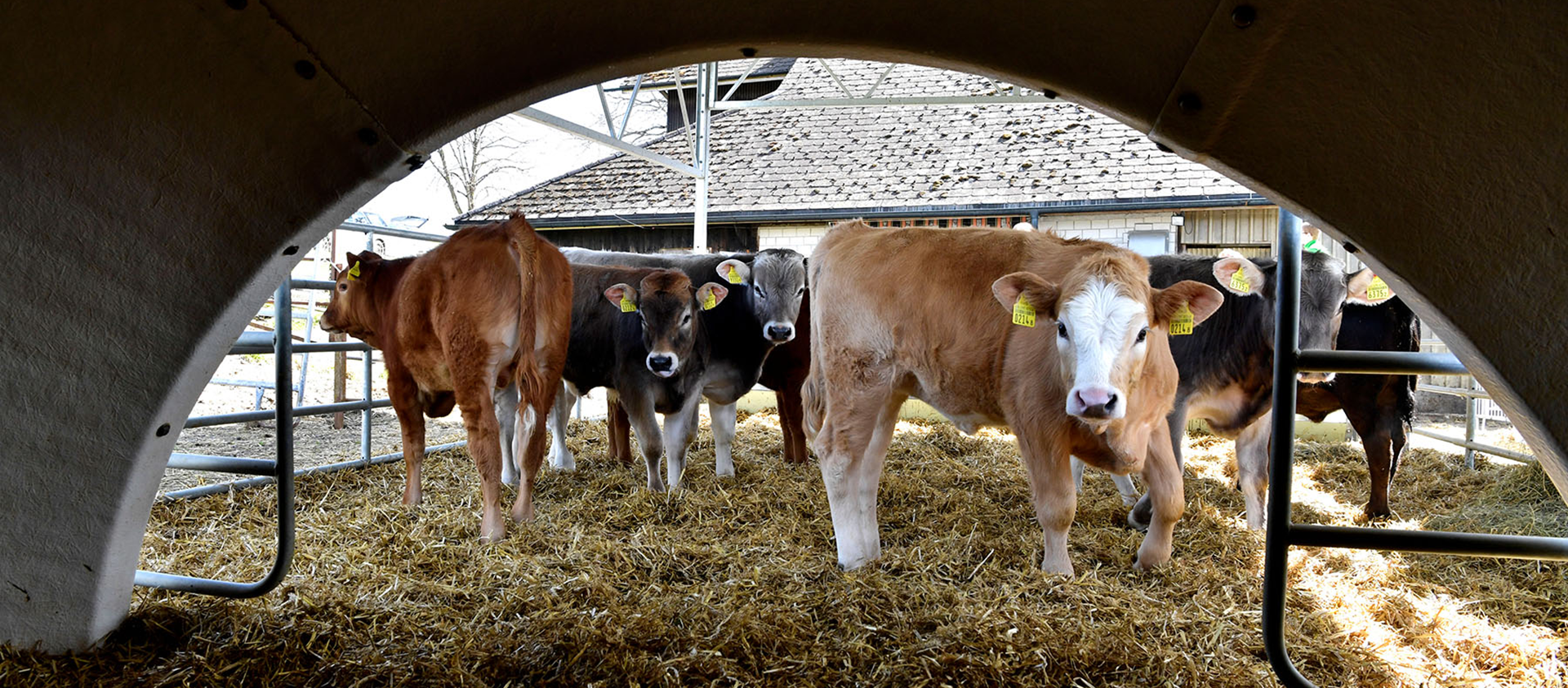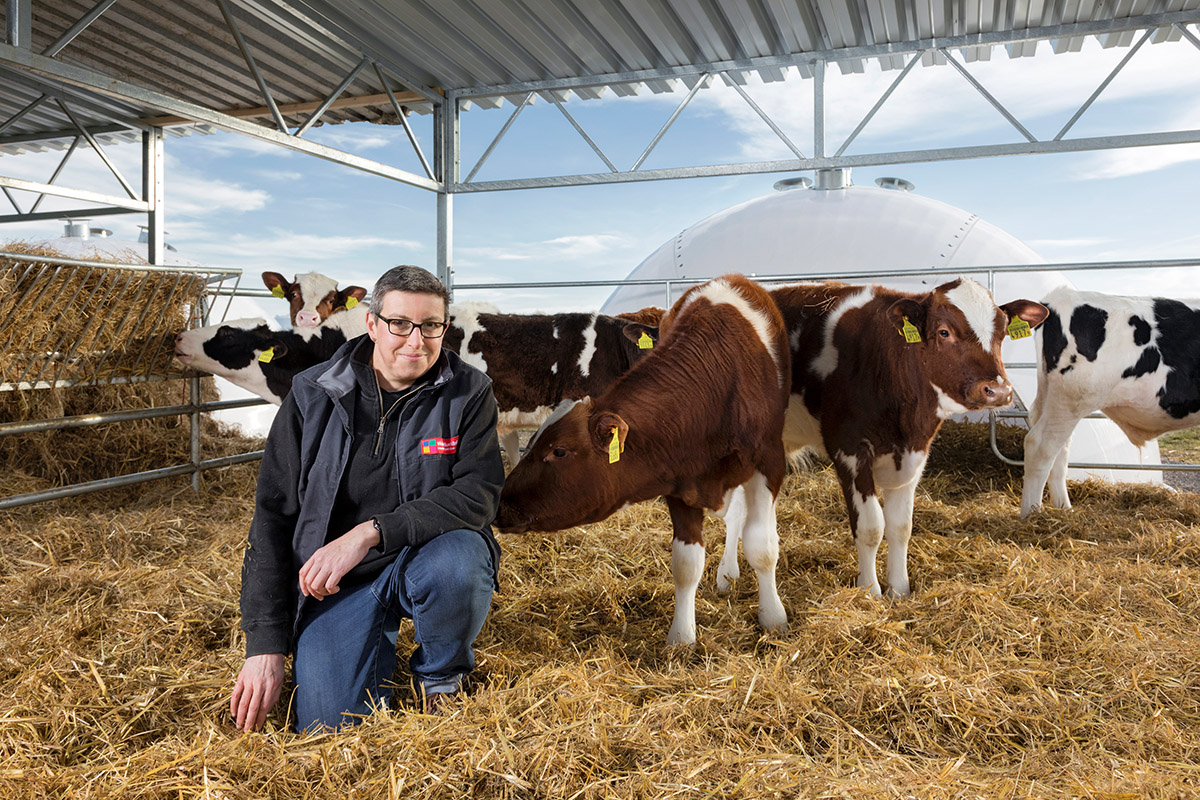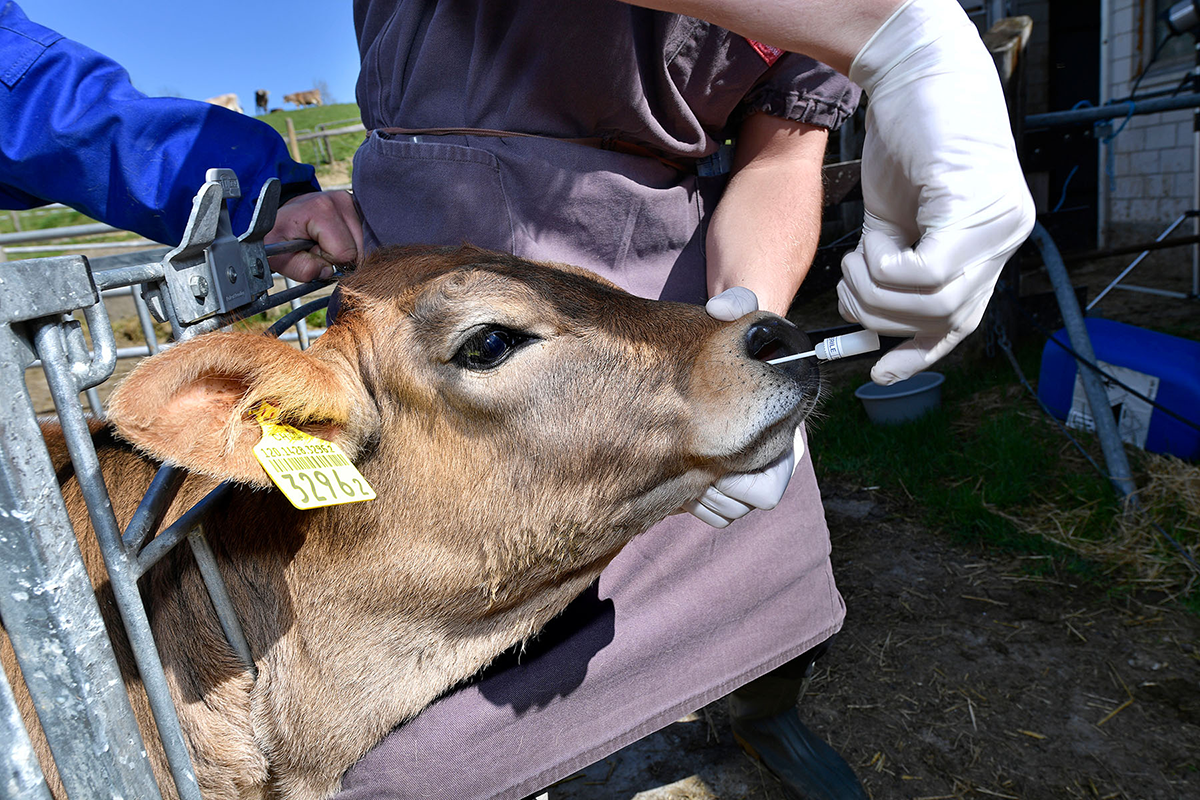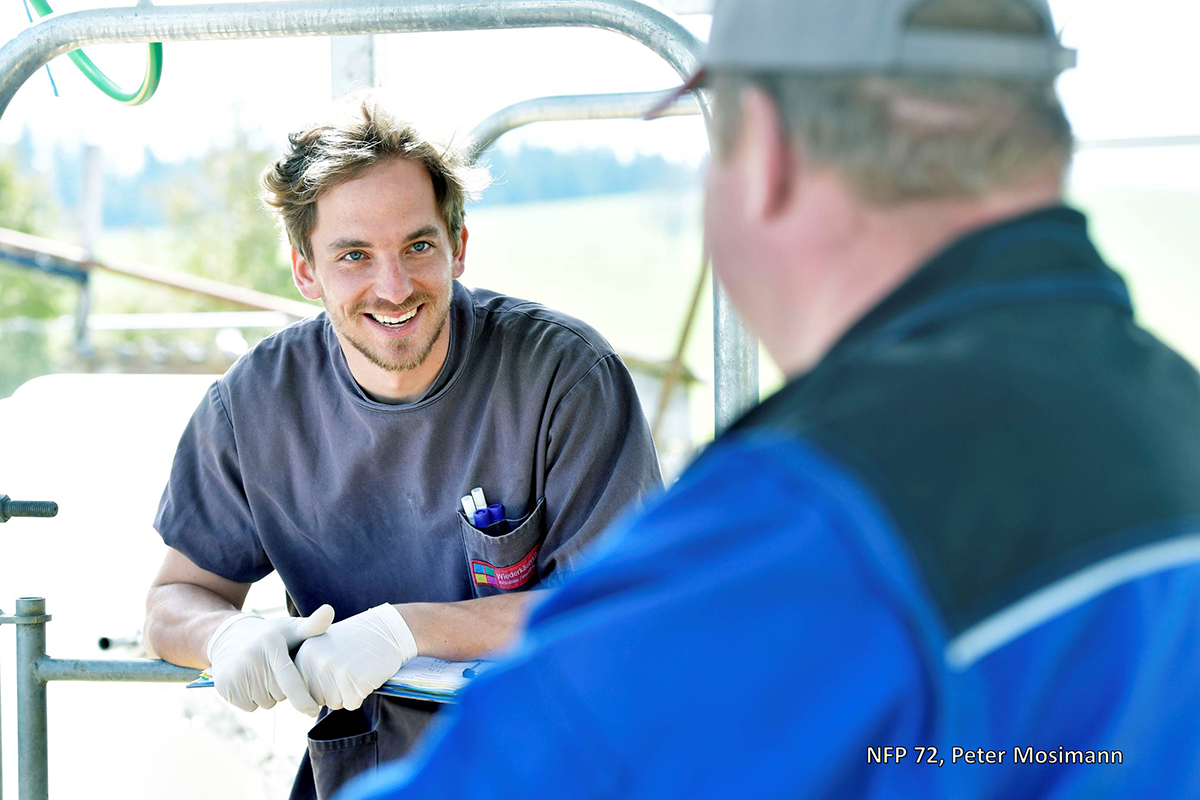Five times fewer antibiotics
Since concept’s main objective is to reduce the use of antibiotics, Becker kept meticulous records of antibiotic use with the farmers’ help. “What we saw exceeded our expectations by far,” he says. While one in every two calves required antibiotics sometime during its life on the reference farms, this was only the case for one in six of the “outdoor veal calves”. And the differences were even bigger over the course of the entire treatment: Farms that implemented the new concept reported that the number of days in treatment was five times lower than at the reference farms.
Hardly any financial differences
Finally, Mireille Meylan and her team also analyzed the financial aspects of the “Outdoor Veal Calf” concept. Because that’s the decisive factor when it comes to putting the concept into practice. For this, they calculated the precise costs that a fattener incurs for each calf – including everything from calf’s cost, the work required and the feed. Two approaches were used for these calculations: first based on the real numbers obtained through the experiment and, second, using average figures for individual cost items as indicated in the annual publication called the “Contribution Margin Catalog of the Agricultural Industry” (Deckungsbeitragskatalog der landwirtschaftlichen Produktionszweige). Despite a few minor differences, both variants showed that, from a financial perspective, fattening in accordance with the “Outdoor Veal Calf” concept is largely on a par with the practices employed by the IP-SUISSE label.
“That’s not any big surprise,” says Ueli Straub of AGRIDEA, the Swiss agricultural extension center for cantonal extension services, which collaborated on this portion of the study. “Feed and the purchase price account for ninety percent of the direct costs incurred for a fattened calf.” Because of that, the rest of the factors don’t have much of an impact. On top of that, the advantages and disadvantages of each system largely cancel each other out: While “outdoor veal calves” require a little more work, this is offset by other factors including the lower mortality rate and good rate of daily weight gain.
A pragmatic path to the future
Mireille Meylan draws an extremely positive conclusion from the project: “We’ve shown that the use of antibiotics can be slashed drastically, at least at farm-based calf fattening operations. Using a pragmatic approach that also makes financial sense.” However, we based our economic viability calculations on the assumption that farmers using the “Outdoor Veal Calf” approach – just like the IP-SUISSE farms – receive direct payments under the RAUS program for ensuring that the animals have sufficient access to fresh air in accordance with a defined standard. Because of the roof over the litter-covered pen, however, this is not yet the case. To ensure that the concept can really be implemented on a widespread basis, it needs to be recognized by the labels, federal offices and wholesale establishments. According to Meylan, though, experience shows that road is a long one. But there shouldn’t be much doubt about its viability anymore - and that it would be worthwhile in the fight against antibiotic resistance.



